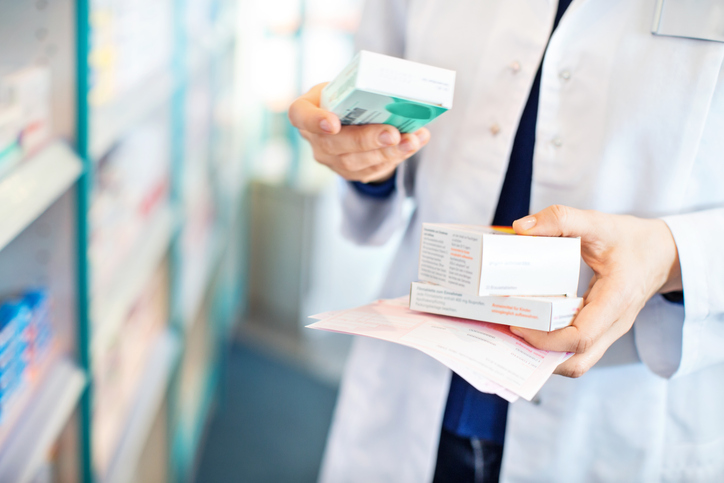
A new medication access report from CoverMyMeds found that after year two of the pandemic, 84% of patients reported delaying or forgoing in-person healthcare visits for a variety of reasons.
Overall, the report found that patients reported being challenged in obtaining their medications and treatments.

With the Rise of AI, What IP Disputes in Healthcare Are Likely to Emerge?
Munck Wilson Mandala Partner Greg Howison shared his perspective on some of the legal ramifications around AI, IP, connected devices and the data they generate, in response to emailed questions.
The study, conducted in September 2021, was administered to 1,000 individuals in each category: patient, provider, pharmacist and asked them to consider the previous 12 months when answering questions.
Drawing on survey data from providers, pharmacists, and patients in conjunction with industry research and patient interviews, the report explored avenues for healthcare technology to increase medication access. Further, the report noted technology solutions for processes typically done manually and it gave action items to improve patient access to medications.
Patient Results
For a variety of reasons, 84% of patients reported delaying or forgoing in-person healthcare visits, according to the report. 42% reported missing appointments out of concern with getting Covid-19 while 55% attributed the delay to Covid-19 resource shortages or restrictions.
Patients missed a range of visits, including primary care (66%), specialist visits (54%), urgent care (30%), and preventative screenings (16%). A shocking 21% reported delaying or forgoing emergency care.
In terms of medication, 82% of patients reported issues with obtaining medication, with reasons ranging from cost (26%) to delays in provider communication (10%) to transportation limitations (6%) to Covid-19 restrictions (38%), the report said. And when they did pick up their prescription, 79% said it cost more than anticipated, an increase from 67% the year prior, according to the report. To compensate, patients reported skipping bills or essentials to pay for medication (52%, up from 43% in 2020), stretching out a prescription (56%, up from 41% in 2020), and forgoing treatments or medications to pay for bills and essentials (51%, up from 36% in 2020). This is in despite 90% of patients reporting that they had taken proactive steps – from using copay cards, coupons, or asking their doctor about affordability options – to afford their medication, according to the report.
Further, the report noted an uptake in telehealth, with 84% participating in at least one such appointment. Patients used telehealth for seeing their primary care provider (55%) and seeing their specialist provider (48%). However, only 3% used telehealth to meet with a provider for the first time, the report said.
Additionally, the report noted that 36% of patients turned to remote pharmacy resources – such as mail order, home delivery, or online pharmacies – to get their medications.
Provider Findings
The report surveyed 1,000 providers and found 86% covered medication affordability with their patients when they reached the point of prescribing the medication. Only 42% reported brought up medication affordability with all their patients, while a mere 32% discussed cost when patients brought up financial concerns. 17% of providers reported discussing medication affordability when they thought the patient potentially had financial challenges, the report said.
Providers noted a need for actionable data when they reach the point of prescribing medication to patient, according to the report. 83% reported they already have access within their EHR to medication specific information and 73% said within their EHR they could access formulary alternative information. However, that percentage dropped to 23% when asked if they could surface medication cash price information in their EHR.
Pharmacist Responses
Over the past year, pharmacists took on additional responsibilities, ranging from: administering Covid-19 immunizations (77%) to starting home delivery program for prescriptions (44%) to starting finding new methods to assisting patients with saving money on prescriptions (37%), according to the report.
In parallel with these increased roles, 54% of pharmacists felt they needed more time to do their job adequately, according to the report. Only 30% said they had enough time. Pharmacists listed an array of reasons whey they did not have the time to do their job adequately, including inadequate staffing (81%), administrative tasks (73%), and an overemphasis on metrics (55%), the report said.
Despite the increased pressure from increased roles, pharmacists often named patient-facing tasks as one of the most fulfilling part of their job. For example, 80% named counseling patients on their medications as one of the most fulfilling tasks while 72% named counseling patients on their condition, the report said. Over half, 56%, reported administering vaccines was highly fulfilling. Of note, 54% chose resolving affordability issues and another 54% noted resolving insurance rejections. Only 29% listed communicating with providers offices as one of the most fulfilling job components, the report found.
Further, 84% of pharmacists said they helped patients in a given week with benefit information.
Pandemic challenges persist
The report noted that 2021 shifted how patients received medication and pursued their healthcare in general. Data indicated an increasingly digital shift in how patients addressed healthcare, both in terms of their treatments and obtaining medications as well as an increased challenge for patients to afford their medications, despite steps from patients, pharmacists, and providers. Lastly, the report noted the increased role pharmacists play in the healthcare process for patients.
Photo: alvarez, Getty Images














